The six types of owl you’ll find in Britain
Gamekeeper Simon Lester offers his guide to these mesmerising creatures, from the pocket-sized Little Owl to the fearsome Eagle Owl - a bird large enough to carry off a baby deer.
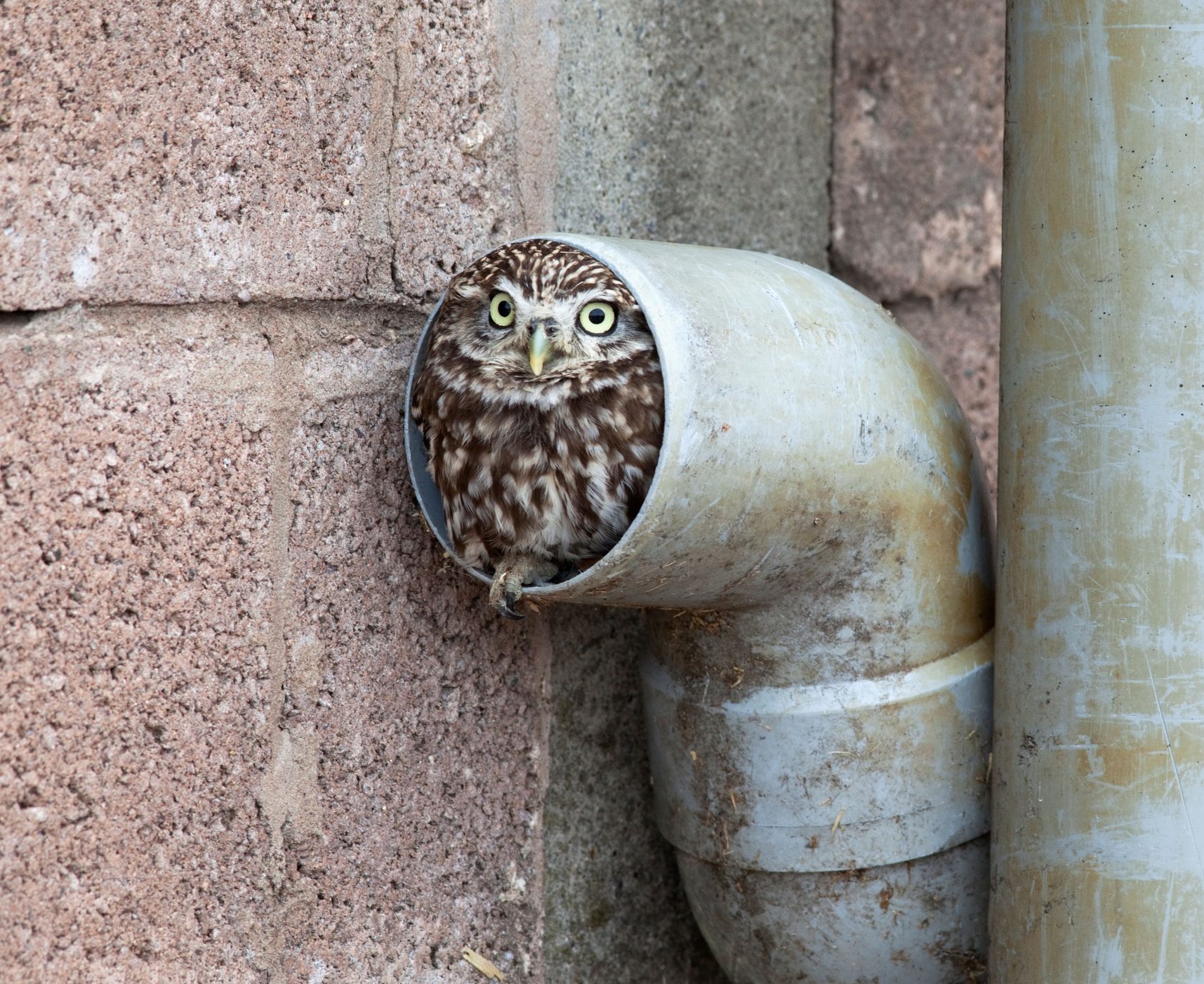

Man has long had a soft spot for owls. We’ve been around these creatures an awfully long time and are held in thrall by a mysterious bird that’s seldom seen in daylight, yet is master of the night: often heard, but hardly ever seen. Most woodland owls are nocturnal or crepuscular – active at dawn and dusk – and like to tuck themselves away in a daytime roost.
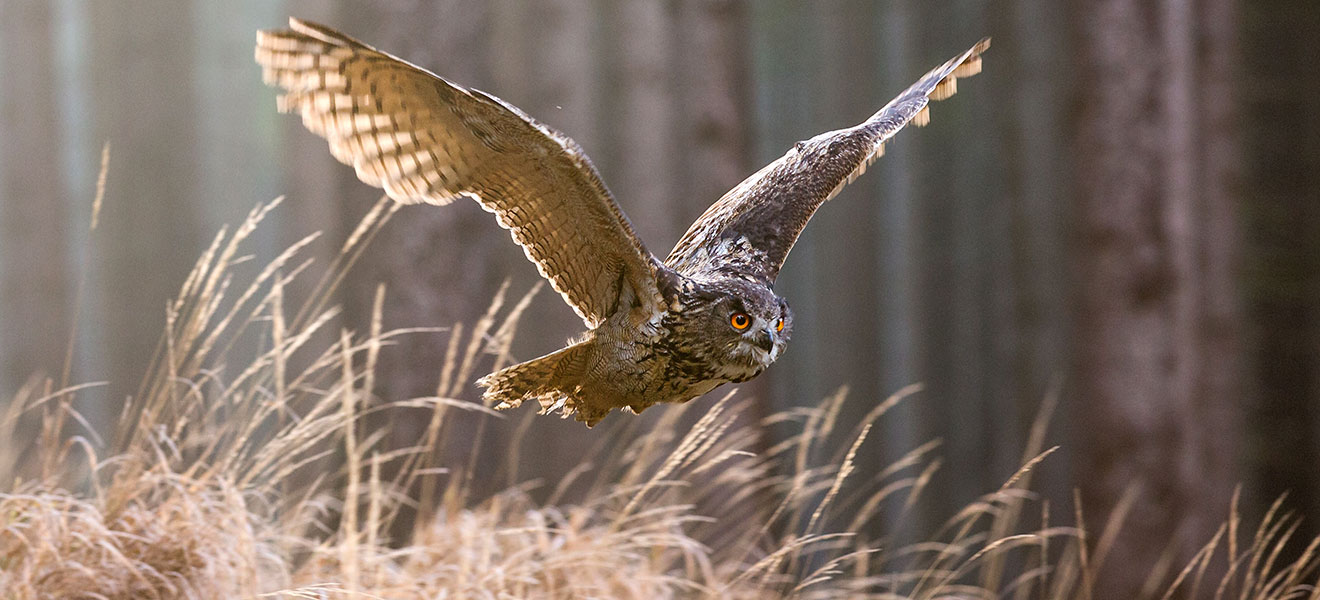
During 40 years as a gamekeeper, I enjoyed lots of encounters, discovering young short-eared owls secreted in a heather crèche and watching adults drop into communal roosts. I recall bunking my mother up an old tree so she could see some newly hatched tawny owlets and her exclamations of delight when she set eyes on those tiny, blue-eyed fluff balls.
Whether you’ve observed five long-eared owls roosting in thick blackthorn, a barn owl hunting a road at dusk or a little brown owl peeping out from a hole in a tree, the one feature they all have in common is the stare, which, along with a parliament, is a collective noun for wise old owls.
Tawny or brown owl (Strix aluco)
Conservation status: amber
Height 15-18in, wingspan 32-41in
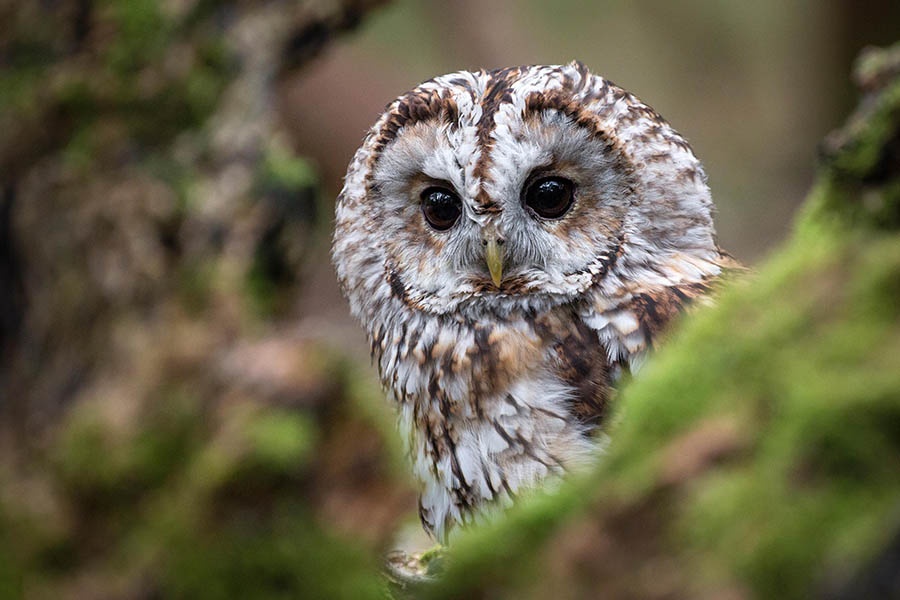
The short and stout tawny’s tan-coloured feathers are streaked with a darker brown, which doesn’t look dissimilar to tree bark and makes for an ideal camouflaging plumage for this nocturnal woodland specialist. Its attractive features are further enhanced by wholly brown eyes, which distinguish it from other species.
These monogamous and extremely territorial treenesters are not present in Ireland, yet boast about 50,000 breeding pairs in the UK. However, a recent decline in numbers means their conservation status has fall from green to amber. Their classic to-whit-to-woo call is the combined cries of the male and female.
Sign up for the Country Life Newsletter
Exquisite houses, the beauty of Nature, and how to get the most from your life, straight to your inbox.
Little owl (Athena noctua)
Conservation status: not assessed
Height 8½in, wingspan 22in
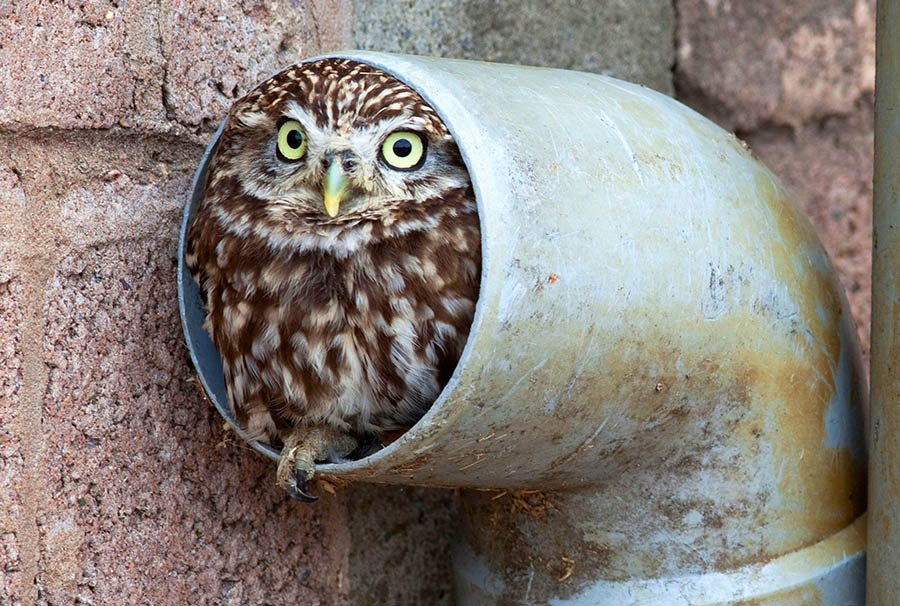
This comical owl has established itself well since its introduction in Kent in 1879. Quickly filling a niche in arable areas, nesting in any small hole and taking advantage of a varied diet including small mammals, birds, insects and worms, its numbers reached 5,700 pairs in 2009, although it’s now thought to be in decline.
With bright-yellow eyes, a bobbing head when perched and an unmistakable undulating flight, little owls can be seen in daylight. Bubo was Athena’s beloved magical little owl and the species featured as the clanking owl in Jason and the Argonauts.
Barn owl (Tyto alba)
Conservation status: green
Height 13½in, wingspan 35in
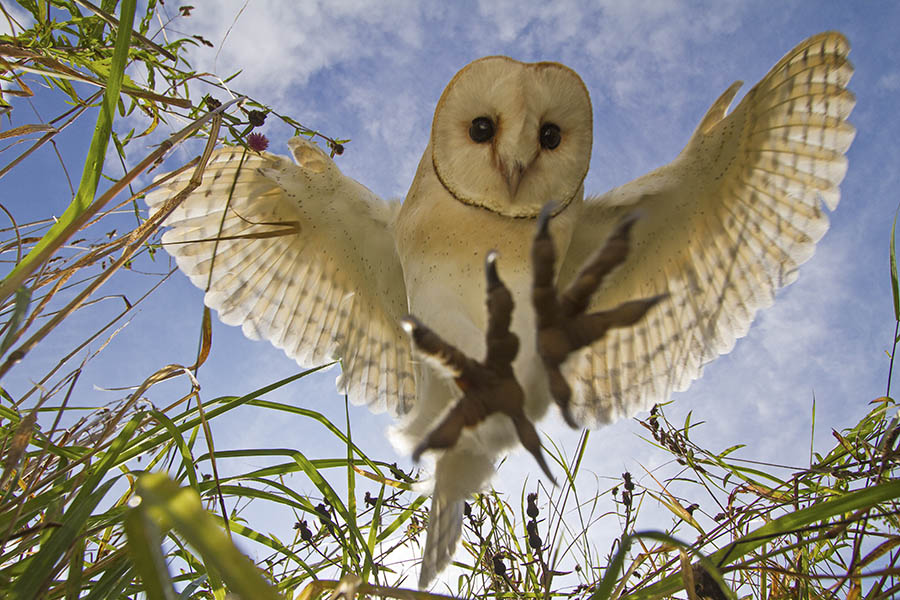
This most elegant of birds can’t be confused with other owls, thanks to its white underparts, golden back and heart-shaped face. Also known as the white or screech owl – just one of the many noises this vocal bird emits – the barn owl has long been the farmer’s friend for keeping rats and mice down around buildings has and been rewarded with purpose-built accommodation, which is often sadly lacking on modern farms.
If conditions are favourable, they’re capable of producing more than one brood a year. With a UK population of only 4,000 pairs, they’re not common – limiting factors are lack of vole-rich habitat with suitable nest sites and a love of hunting roadside verges that makes them vulnerable to road-traffic accidents.
Long-eared owl (Asio otus)
Conservation status: green
Height 15in, wingspan 39in
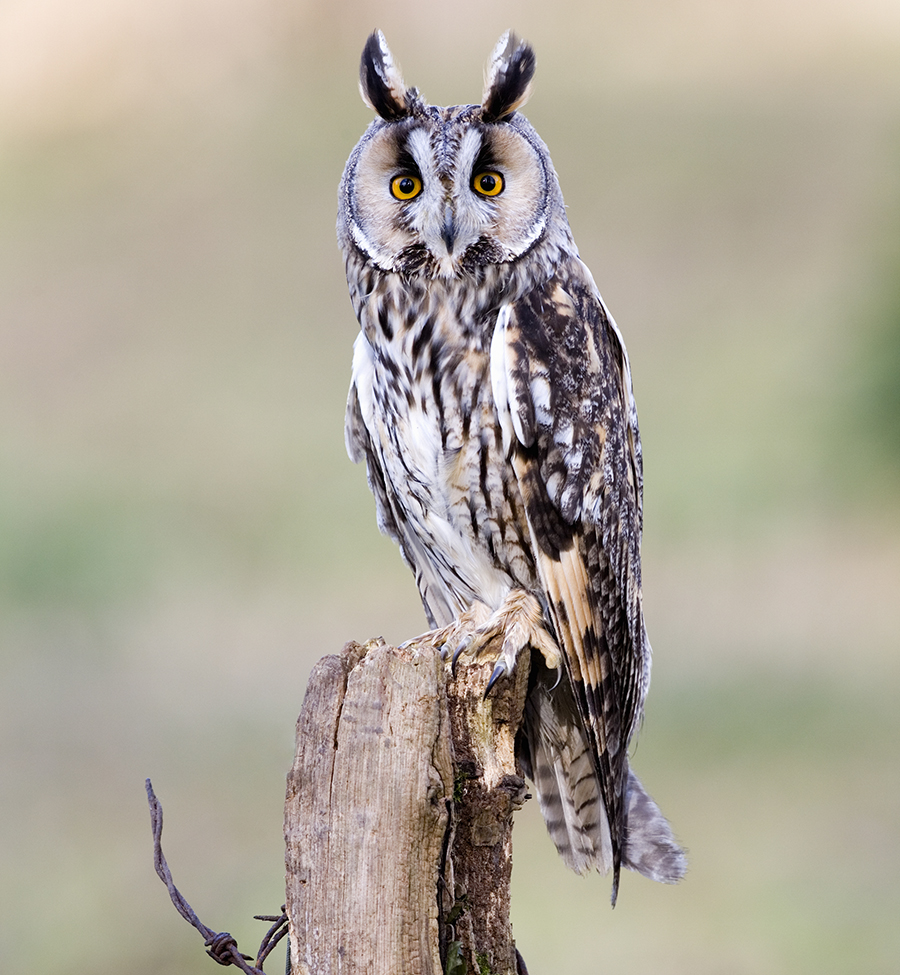
Definitely the wisest looking owl, thanks to its upright stance, ear tufts and authoritative, staring orange eyes, this nocturnal and most secretive of owls often roosts communally in dense cover. Adults give their presence away with
a soft, elongated hooo and young birds make a noise like a creaking gate. They like to nest in an old crow’s nest or redundant squirrel drey in their preferred coniferous woodland. There are about 3,500 pairs; numbers are boosted in winter by migrants from Europe.
Short-eared owl (Assio flammeus)
Conservation status: amber
Height 15in, wingspan 40in
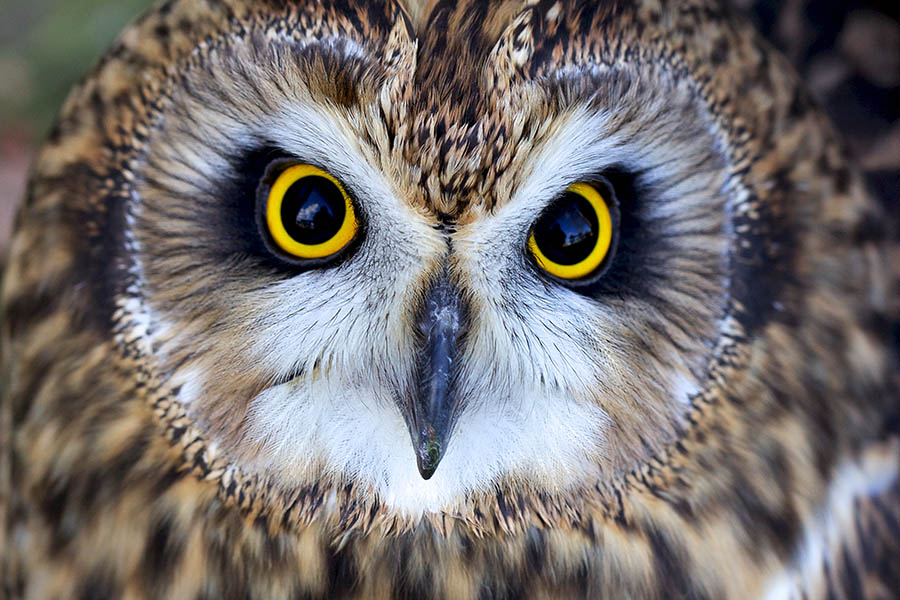
The mottled brown appearance of the short-eared or bog owl is vital camouflage for adults and their young, which, unusually, nest on the ground. Easily distinguished thanks to their prominent ear tufts and bright-yellow eyes highlighted by a black ring, these are birds of the open space and can be seen hunting during the day.
Their nomadic nature takes them from lowland estuaries and coastal plains to their summer breeding haunts of the uplands, where wing clapping forms part of their mating display.
Fluctuating small mammal populations have a direct effect on breeding numbers. Because of this, the number of pairs varies from 620 to 2,180; over winter, numbers can swell to between 5,000 and 50,000 individuals.
European eagle owl (Bubo bubo)
Conservation status: not assessed
Height 26in, wingspan 68in
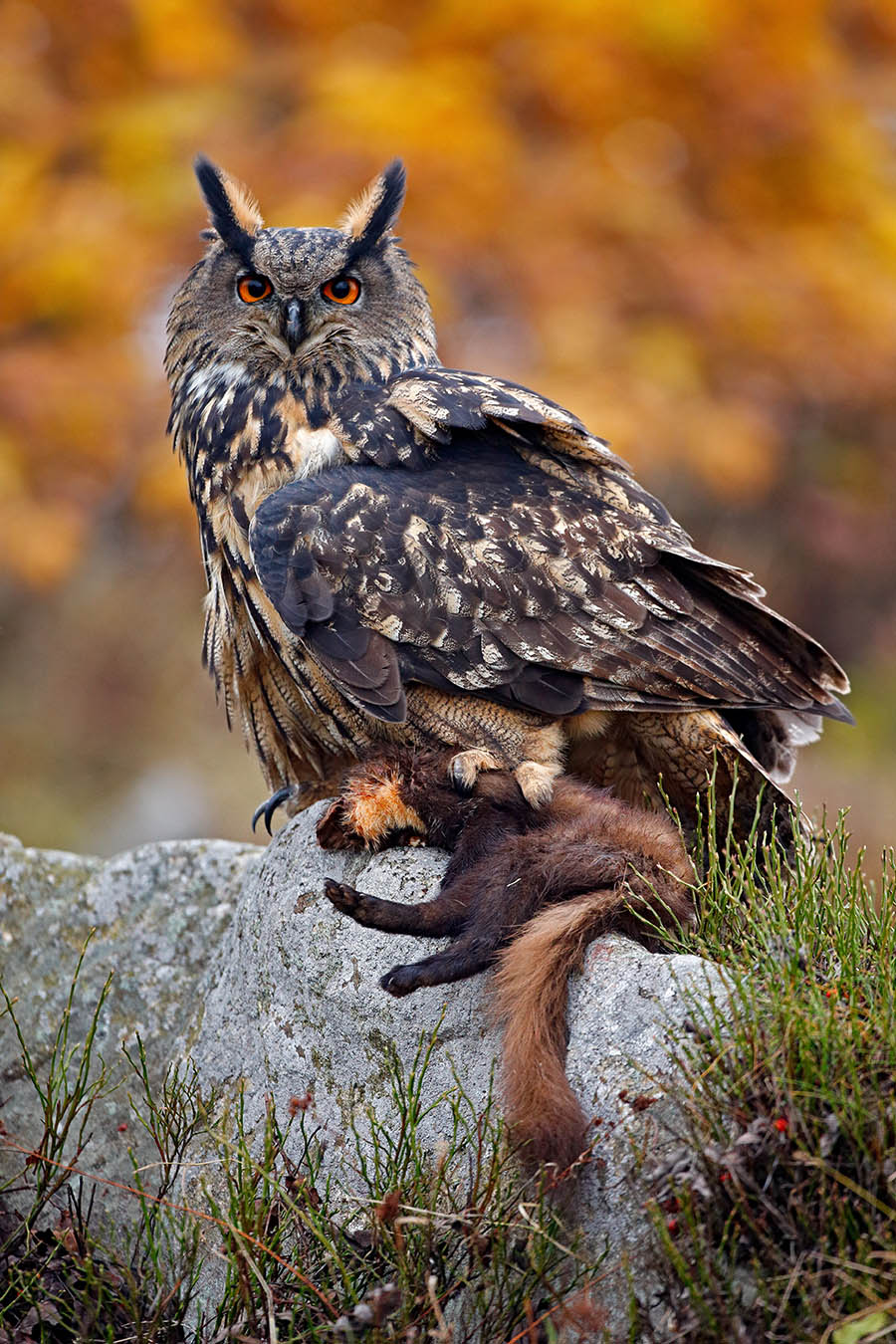
This giant owl divides opinion among conservationists. Some think it should be a native bird and the population is from migratory birds from Europe, but others say it’s an unwelcome escapee from captivity. However, it has successfully bred in the UK – most recently in North Yorkshire – since 1996.
Resembling an overgrown long-eared owl, it can take prey up to the size of a deer fawn and, as a top predator, will not tolerate other raptors in its territory. Estimates of breeding-pair numbers differ widely from as few as 12 to as many as 40.
Country Life is unlike any other magazine: the only glossy weekly on the newsstand and the only magazine that has been guest-edited by HRH The King not once, but twice. It is a celebration of modern rural life and all its diverse joys and pleasures — that was first published in Queen Victoria's Diamond Jubilee year. Our eclectic mixture of witty and informative content — from the most up-to-date property news and commentary and a coveted glimpse inside some of the UK's best houses and gardens, to gardening, the arts and interior design, written by experts in their field — still cannot be found in print or online, anywhere else.
-
 Jungle temples, pet snakes and the most expensive car in the world: Country Life Quiz of the Day, April 14, 2025
Jungle temples, pet snakes and the most expensive car in the world: Country Life Quiz of the Day, April 14, 2025Mondays's quiz tests your knowledge on English kings, astronomy and fashion.
By James Fisher Published
-
 Welcome to the modern party barn, where disco balls are 'non-negotiable'
Welcome to the modern party barn, where disco balls are 'non-negotiable'A party barn is the ultimate good-time utopia, devoid of the toil of a home gym or the practicalities of a home office. Modern efforts are a world away from the draughty, hay-bales-and-a-hi-fi set-up of yesteryear.
By Annabel Dixon Published